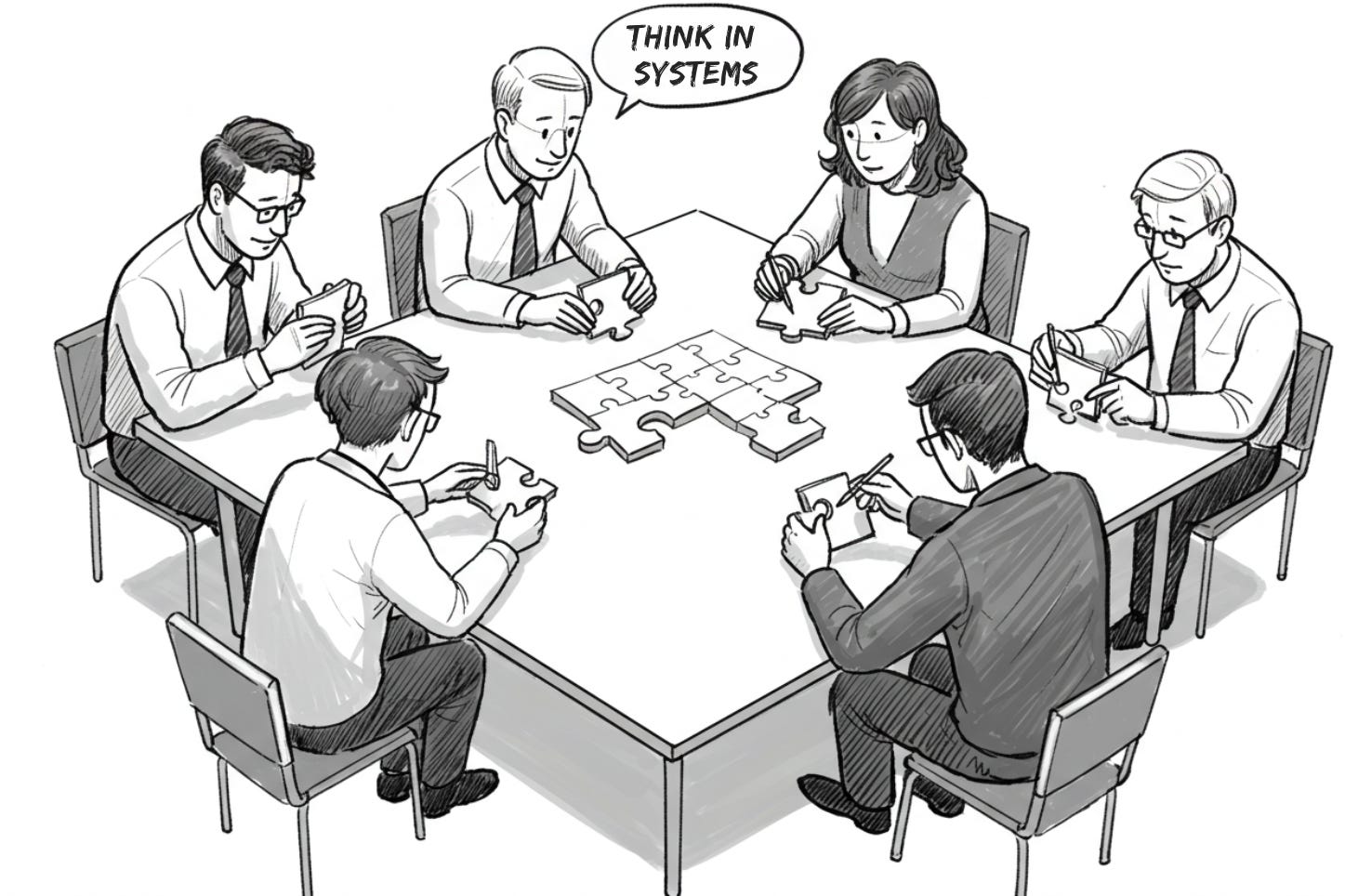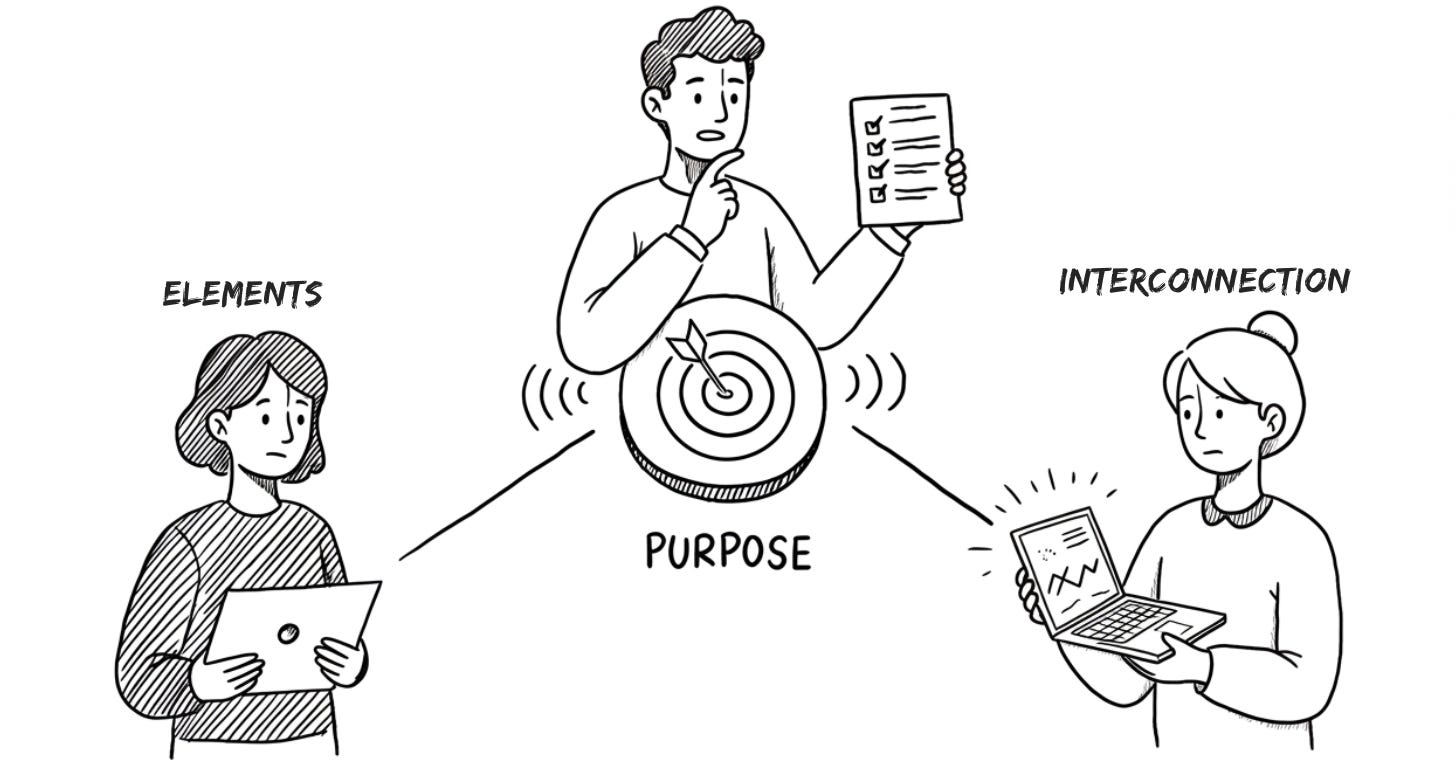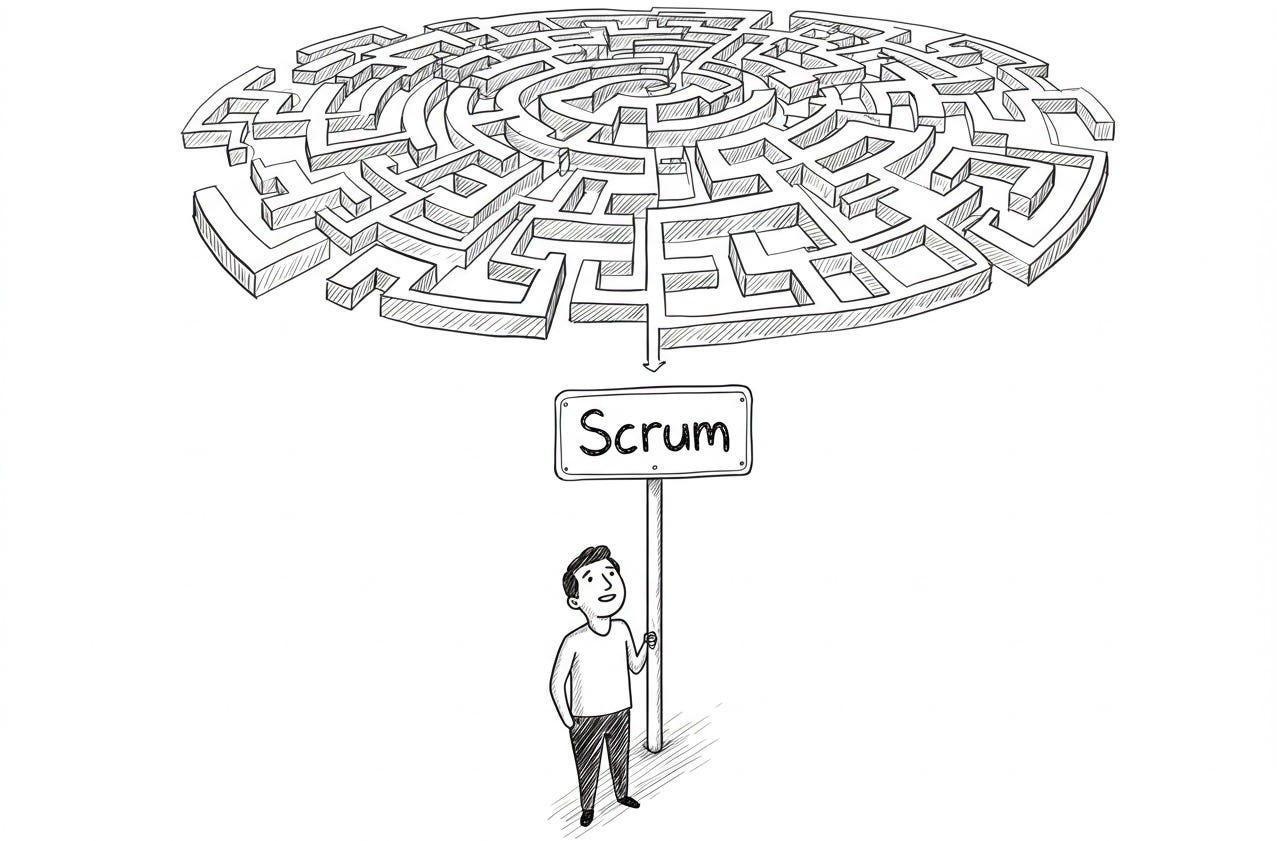“If you optimize the parts, you sub-optimize the whole.”
— Russell Ackoff
Russell Ackoff’s observation is the guiding principle for understanding the systems within product development.
Scrum teams operate within a dynamic, evolving network of people, technologies, and market forces, all of which continually learn and adapt to reshape the environment. Every change you make, every practice you “optimize,” sends ripples through that ecosystem.
“Systems thinking” is the difference between being a good Scrum Master and becoming a leader who can transform how products are built.
In today's post, I will share my perspective on how your Scrum team operates within a complex adaptive system. I will share how making sense of this tiny little detail can transform your approach to leading Product teams.
Let’s get started.
What is a System?
A system is a collection of interconnected parts that work together to achieve a purpose.
It has 3 key ingredients:
Elements: the concrete parts (people, components, policies, tools)
Interconnections: the relationships, rules and flows that link the elements
Purpose: the result that the system produces
Together, these ingredients give a system its dynamic nature.
Change any one ingredient, and the system will respond, often in unpredictable ways.
Understanding that your Scrum team is “part” of a system means recognizing that every retro you run, every event you adjust, and every discussion you facilitate sends ripples through this web of elements, interconnections, and purpose.
Got an urgent question?
Get a quick answer by joining the subscriber chat below.
Why, as a Scrum Master, you can’t ignore Systems Thinking?
You must have heard the saying:
“Scrum is easy to understand but difficult to implement.”
Where did it come from? It came from here:
Multiple teams often touch the same code base
There are dependencies on ops, security, legal, or UX groups
Leadership often change priorities
There are legacy systems
Distributed teams exist across time zones
etc.
All of these “things,” the Elements, when come together, produce a pattern of behaviour over time.
This pattern of behaviour, the “System,” is usually very complex.
No doubt. Scrum, by design, is simple.
But the reality it operates in? That is far from simple.
So!
If you treat each symptom (slow build, missed Sprint Goal, production defect) in isolation, you are in an infinite fire-fighting loop.
But!
If you learn to see the “System,” you can help your team identify the leverage points where small changes can create big impacts.
How does Systems Thinking help Scrum Masters approach impediments?
Not all impediments are created equal. The challenge lies in knowing how you should respond when you identify an impediment.





